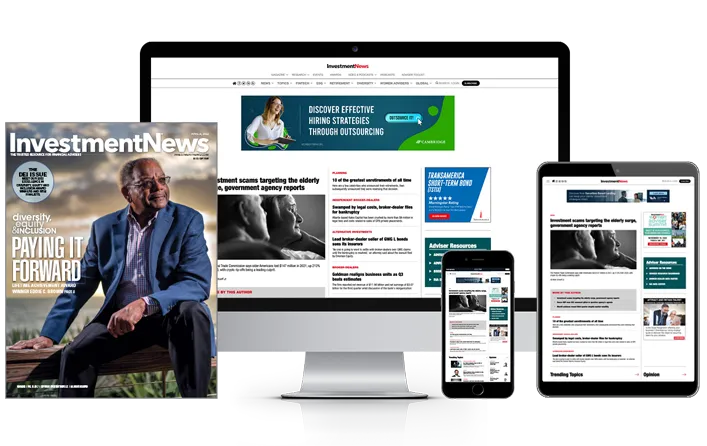Moody's Investors Service late yesterday downgraded John Hancock Life Insurance Co. (USA)'s insurance financial strength ratings, citing problems in the carrier's long-term-care insurance business.
Moody's Investors Service late yesterday downgraded John Hancock Life Insurance Co. (USA)'s insurance financial strength ratings, citing problems in the carrier's long-term-care insurance business.
The rating agency trimmed the ratings on John Hancock Life and Manufacturers Life Insurance Co. to A1 from Aa3. The downgrade follows the announcement that Manulife Financial Corp — John Hancock's parent company — recorded a third-quarter net loss of nearly $1 billion.
The insurer's troubles with its U.S. block of policies of long-term-care insurance, along with the announcement of an LTC premium hike over an average 40%, played a large part in Moody's downgrade.
“The challenges of securing large rate increases while avoiding anti-selection to deal with higher morbidity and claims in the long-term-care block and diminished financial flexibility drove the downgrade,” Peter Nerby, senior vice president at Moody's, said in a statement.
About 80% of John Hancock's existing block of LTC policies would be affected by the rate hike, Manulife executives confirmed during an earnings conference call yesterday. Much of that business was written before 2004.
Analysts on the call expressed doubts that Manulife could obtain immediate regulatory approval for the rate hikes, some of which could be as high as 90%. Jim Boyle, president of John Hancock Financial Services, called such a hike an “outlier.”
Manulife chief financial officer Michael Bell said there would be rate hikes on new long-term-care business in the U.S., as well as on new business with universal life with no-lapse guarantees.
Prices on new LTC policies will rise by a total of 24% through early 2011 and instituted in two phases: a 16% cost increase will be effective in 2010, and the remaining 8% will take effect early next year.
“The older [LTC] blocks have the worst experience, therefore on average they're getting larger increases,” Mr. Bell said during the call. “We are in an environment now where our new business prices are materially above average in-force rates. As a result, the business we wrote recently either needs zero or small rate increases.”
For universal life insurance policies with no-lapse guarantees, prices will go up 13% for new business. That hike will also be split into two phases, with a 5% increase going into effect this year and an 8% rise going into effect next year.
Moody's isn't the only agency with an eye on Manulife and John Hancock.
Standard and Poor's Ratings Services yesterday placed both companies, along with Manufacturers Life and a slate of other subsidiaries, on CreditWatch with negative implications.
Currently, S&P has an A counterparty credit rating on Manulife and an double-A rating on Manulife's insurance operating subsidiaries. In this case, earnings volatility and a nearly $1 billion goodwill impairment charge were key factors in the ratings agency's determination. A second goodwill impairment charge of about $2.2 billion could kick in on Jan. 1 as the insurer implements new accounting rules.
“The way we look at it, we have strengthened our reserve enormously,” said Donald Guloien, president and chief executive of Manulife. “And I think we have improved our claims-paying ability with the actions that we've taken in the quarter.”






